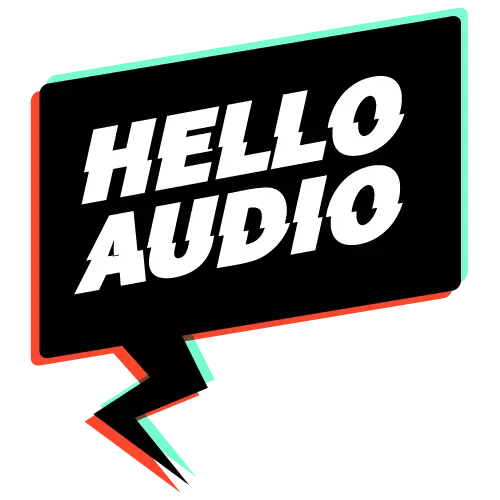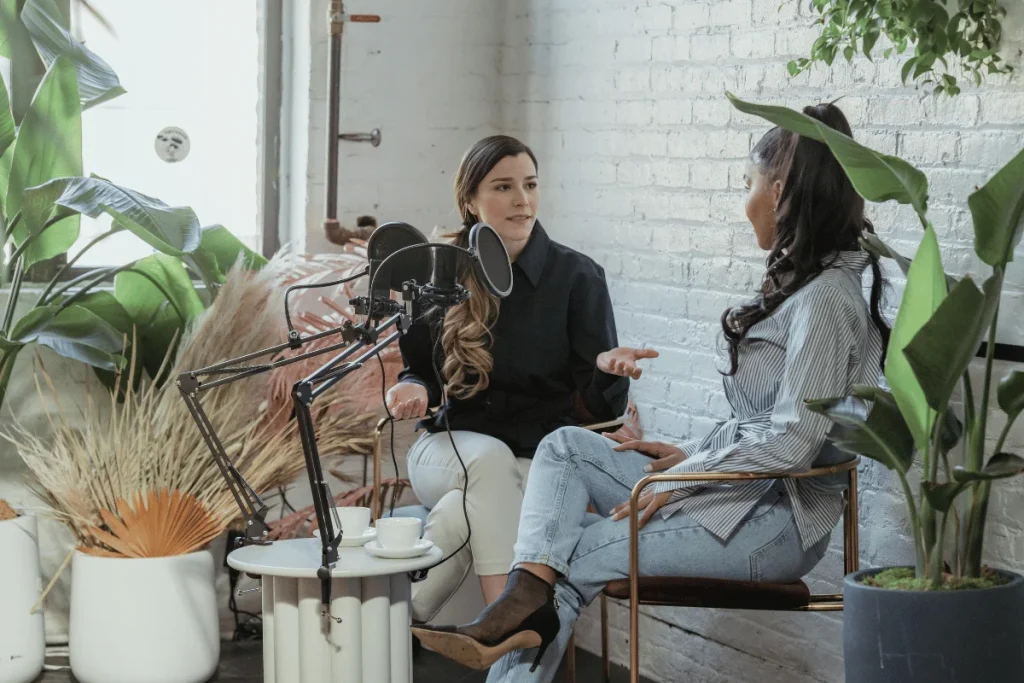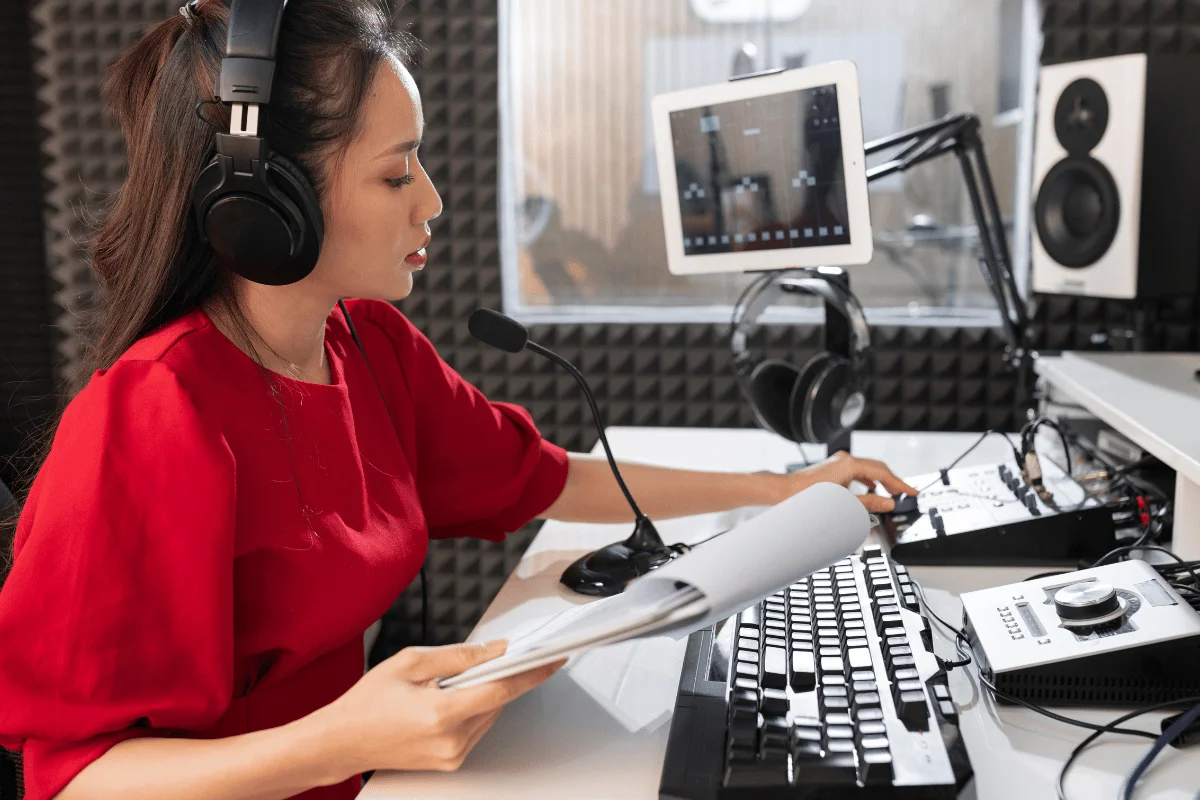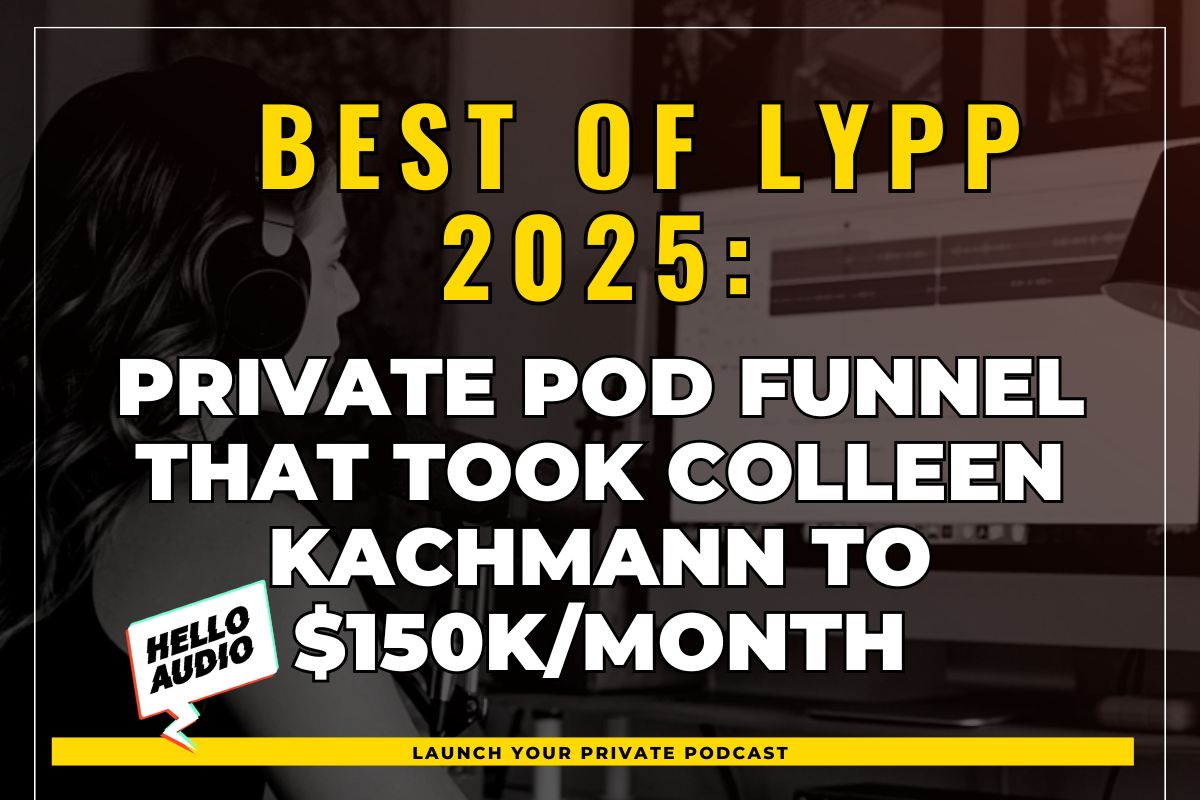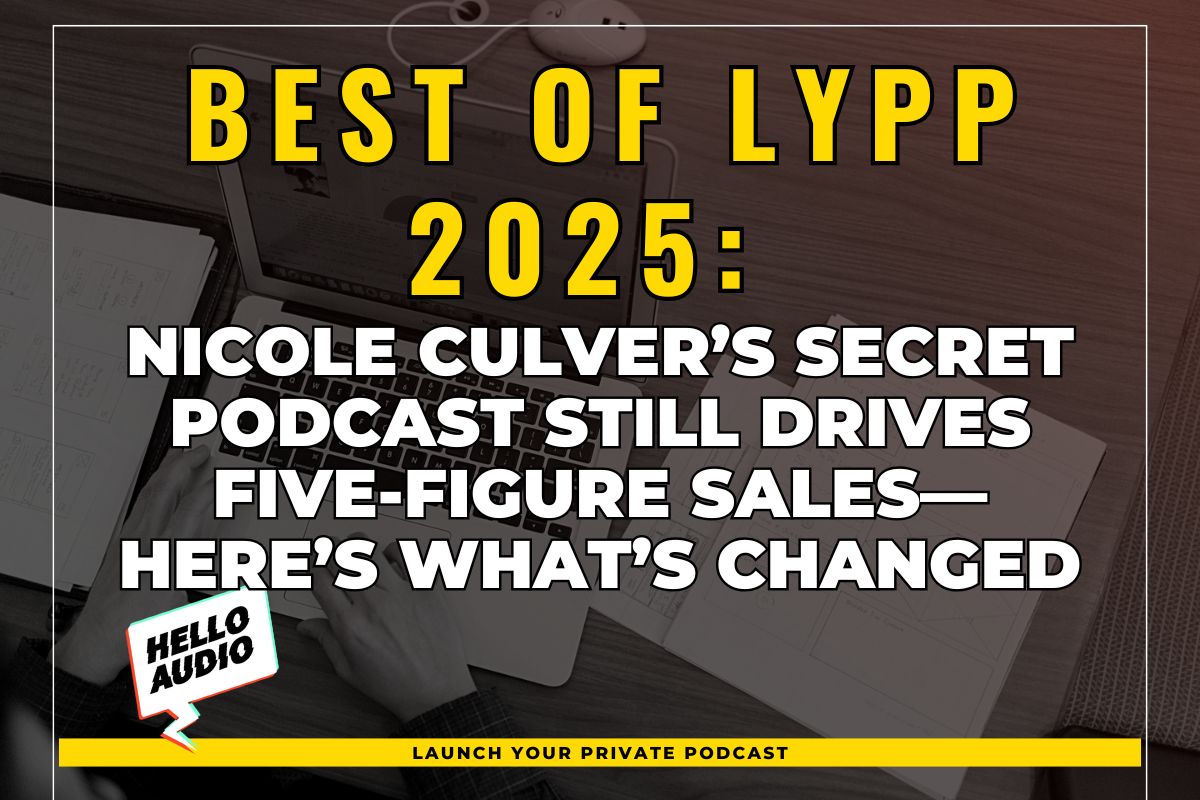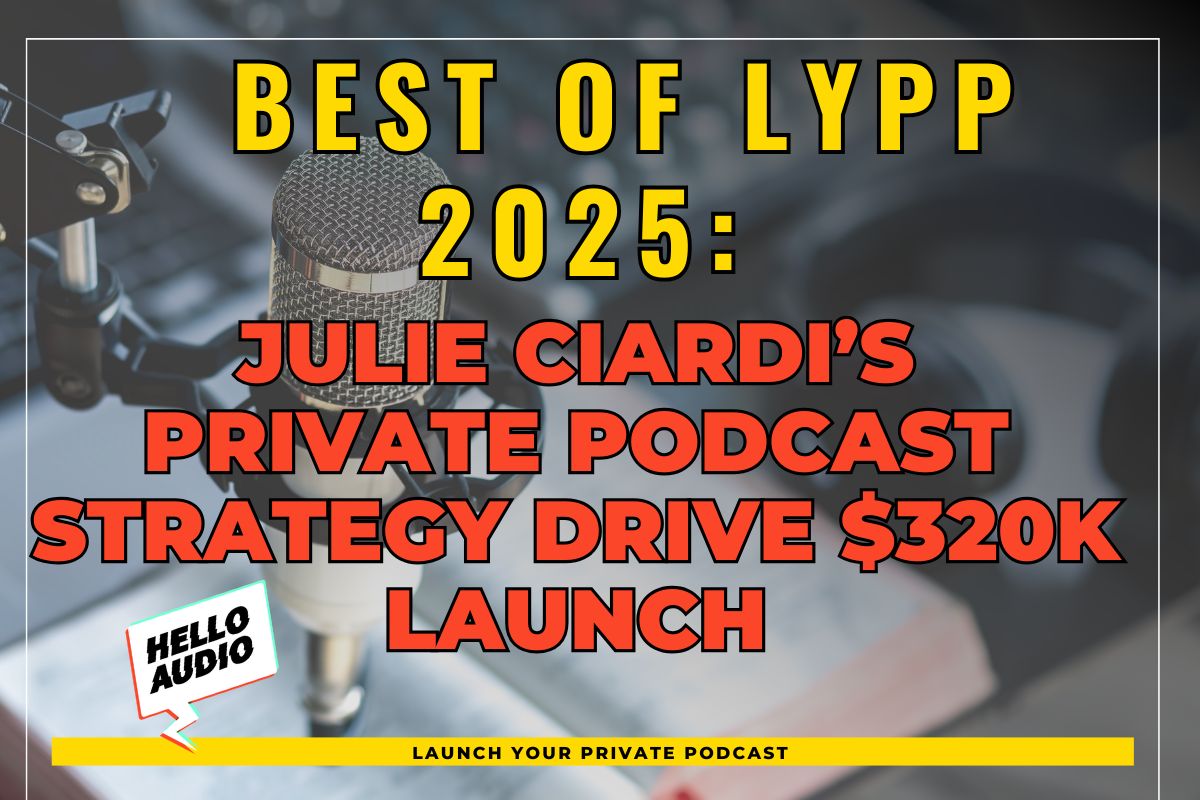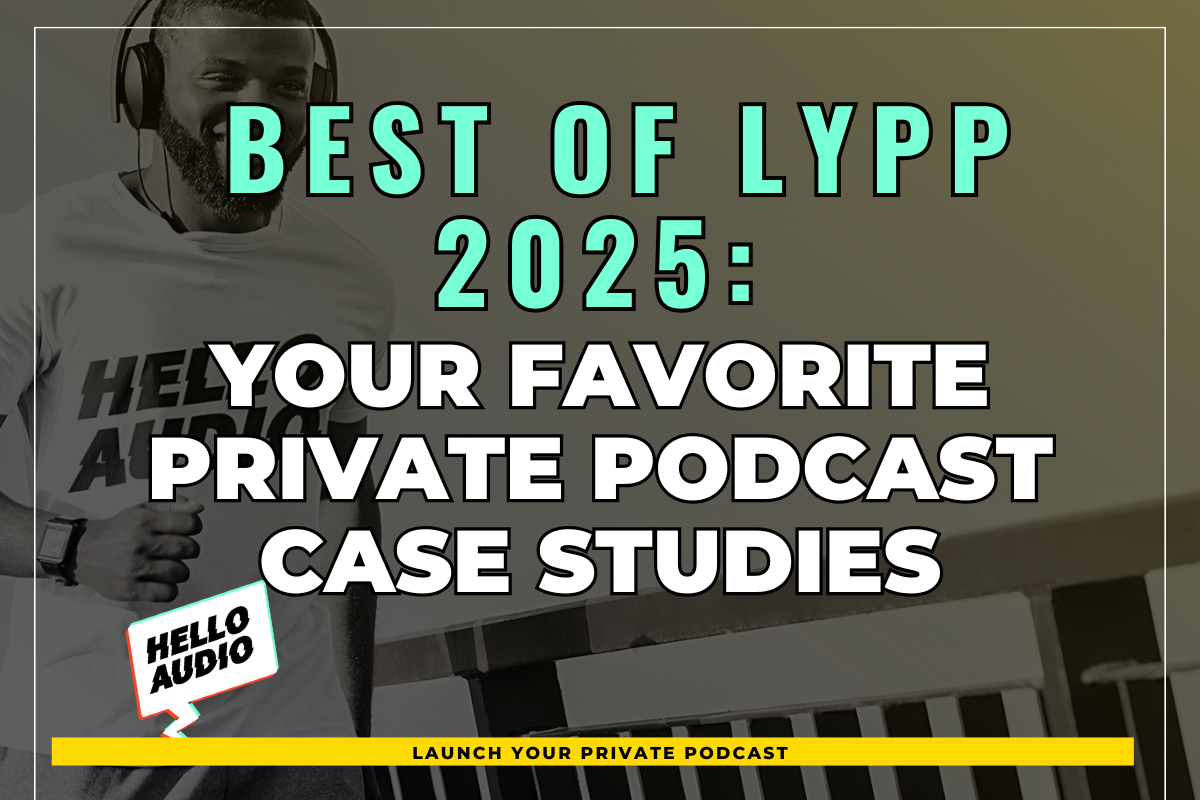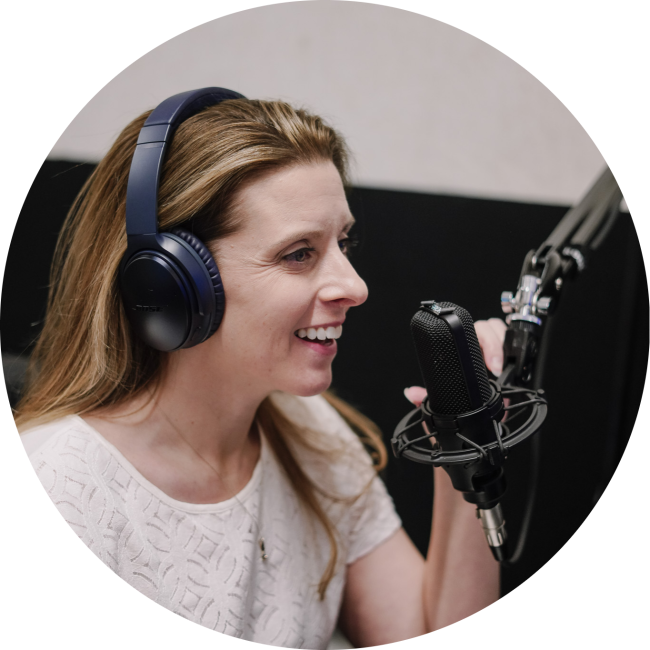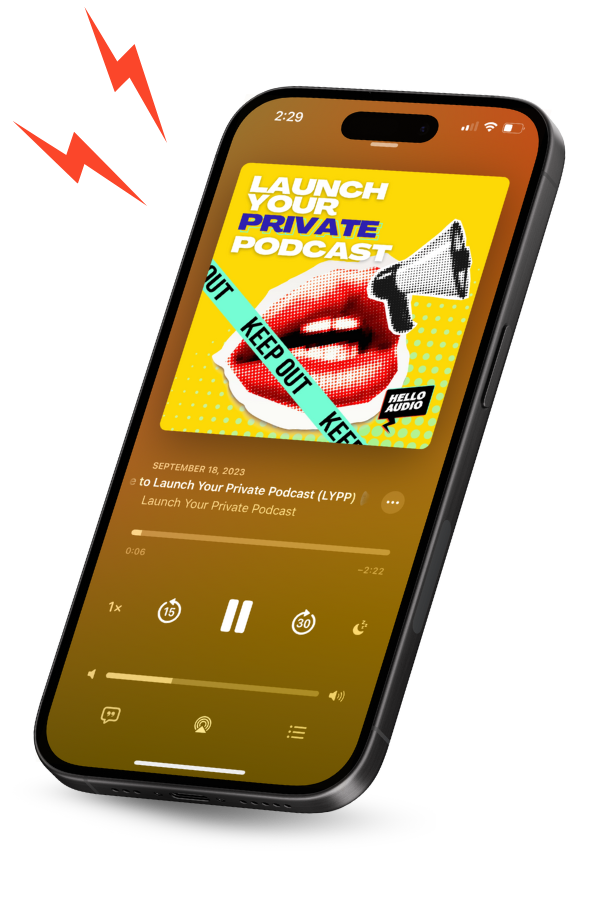The secret to successful podcasts like The Tim Ferriss Show and The Daily is in the details.
These shows incorporate exceptional recording, engaging interviews, detailed editing, and strategic marketing and SEO tactics.
Want to learn more about what makes a great podcast?
We’ve created a list of 55 podcast tips that provide clear guidance, no matter your stage in the podcast production cycle.
TL;DR – What Makes a Good Podcast?
Pressed for time?
Here’s a summary of what makes a great podcast:
- Creating content tailored to your target audience.
- Perfecting your recording, interviewing, and editing to grip the listeners with polished content.
- Ranking high on search engines using SEO tactics.
Pro Tip: You can repurpose your existing content to quickly create and manage private podcasts with Hello Audio.
Our one-click publishing delivers your private audio feeds to listening apps like Spotify.
Try our 7-day trial—for free and launch your first private podcast in minutes.
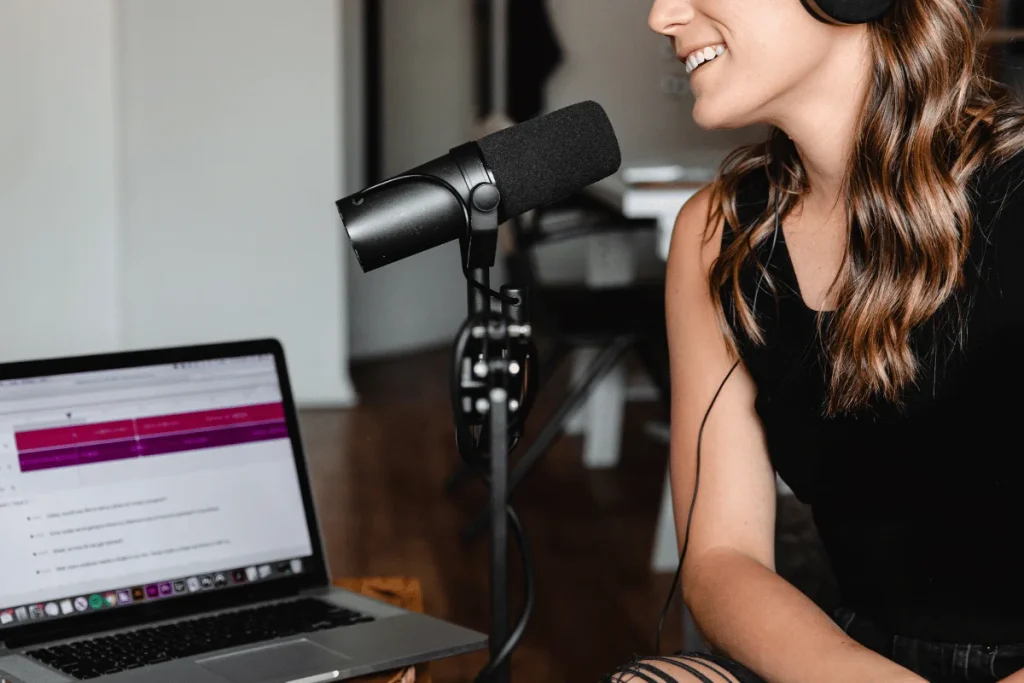
3 Podcast Best Practices
Want to create successful podcasts? Check out our top 3 best practices:
1. Research Your Audience
Understand who your audience is and what they want. Research their lifestyle, gender, age, interests, listening behavior, specific needs, and challenges.
With a perfect understanding of your listener, you can create relatable content that your target audience will love.
2. Repurpose Existing Content
Here’s another essential tip — repurpose your video and audio content, such as TikTok videos, meeting replays, digital courses, and more, to save time recording new content.
Use Hello Audio to convert your preexisting media files into private podcasts in minutes. Our platform then auto-delivers the private audio feeds to major listening apps like Spotify.
You can also auto-transcribe episodes and access listener analytics per episode.
Try our instant demo and see how Hello Audio works.
3. Track Key Podcast Metrics
Podcasting is a strategic tool for achieving specific goals, such as generating and warming leads, converting leads into sales, growing an audience, and driving website traffic.
So it’s crucial to monitor podcast metrics, such as downloads, engagement, listens, subscribers, audience demographics, and highest-performing episodes. That way, you can identify what’s working and what’s not.

55 Podcast Tips
So, how do you ensure your podcast turns out great?
Follow these clear and simple steps to guide you from start to finish in your podcasting journey.
Now, let’s dive into our exhaustive tips and elements of a podcast:
Podcast Recording Tips
Want to record like a pro?
Learn the 10 easy things you can do to create the best podcast:
- Create a script: The first step is to write a podcast script that will keep you on topic while you record.
- Pick a high-quality mic: Choose an external microphone to capture crisp audio quality and avoid unwanted voice pickup.
- Wear headphones: Shop for comfy and soundproof headphones to prevent echo and external voices. They also help you monitor your guests’ voices, preventing audio fluctuations.
- Get a pop filter: Use a pop filter to prevent the plosives and essing sounds and create professional audio.
- Use recording software: Choose a program that has a user-friendly interface, multi-track recording, and editing capabilities.
- Soundproof your environment: Choose a quiet space with minimal distractions, turn off the appliances, and soundproof your environment. Pick a carpeted room with furniture to block out sounds and prevent echoes.
- Position your mic properly: Keep your mic stable and at the same level as your mouth, and sit up straight to breathe easily.
- Test your equipment: It’s vital to check all your equipment and find the right angle for your setup. You should also make a test recording. That way, you can avoid small mistakes afterward.
- Mute participants and use multi-track recording: If you have more than one guest, mute guests who aren’t speaking. Record audio using separate tracks, which makes editing easy.
- Leave editing cues: Mistakes happen during recording. You can make your editing easy by leaving cues such as clapping or making sudden noise, which will help you spot the spike in the audio levels during editing.
Implement these tips when recording your next show to ensure top-quality sound.
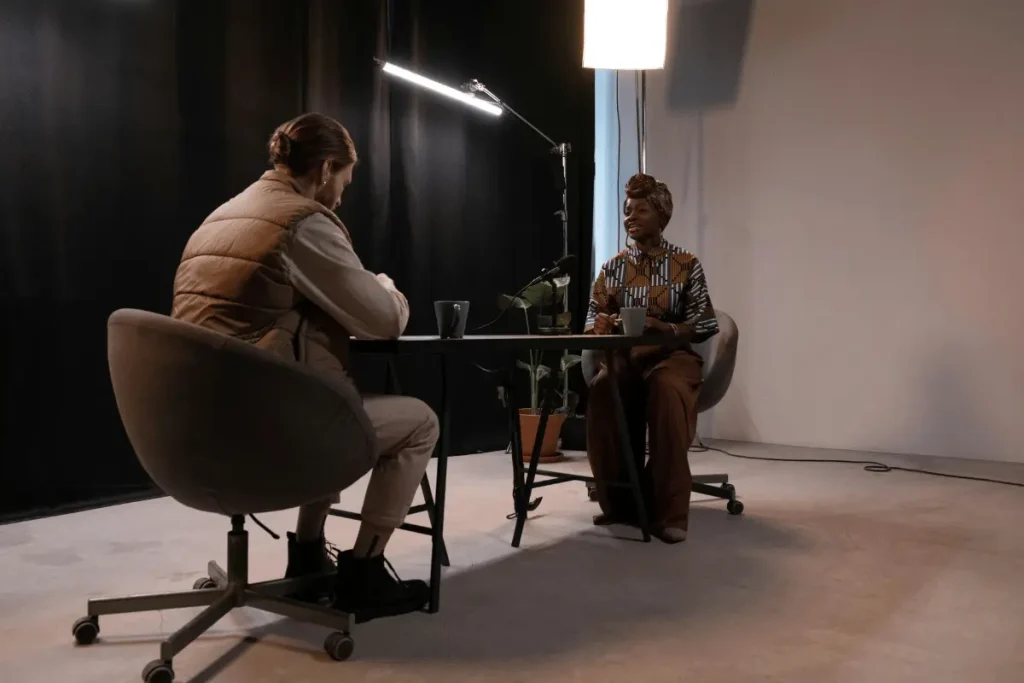
Podcast Interview Tips
Feeling unprepared for your next podcast interview? Here are 10 techniques to make your interviews smoother:
- Invite the right guests: Find relevant and knowledgeable speakers on the topic. Make sure they’re entertaining and relate to your listeners’ needs.
- Obtain consent: If you are recording phone calls, ensure you get a one-party or two-party consent, depending on your state.
- Prep the questions ahead: Jot down open-ended podcast questions you intend to ask. Avoid yes/no and leading questions.
- Brief your guests: Send them a list of pointers about the topic and give them information about your audience to help them tailor their answers to your listeners.
- Check your recording setup: All mics should be plugged in. Turn on your headphones and check the settings on your recording software. Confirm that your mic is picking up the sound.
- Make your guests comfortable: If you’re conducting a physical interview, provide whatever your guests need.
- Use body language and vocal cues: Build rapport with the guest using nonverbal actions such as nodding, maintaining eye contact, and using an approachable tone.
- Limit interjections: Train yourself to allow your guests or co-hosts to complete their thoughts without dropping phrases like ‘yes’ and ‘okay’ when they speak.
- Keep the interview relaxed: Keep calm and strive for a conversational interview.
- Minimize distractions: Record your interview privately, silence your phone, and maintain the guest’s focus.
Remember to have fun, enjoy the conversation, and use these tips to level up your podcast interviews.
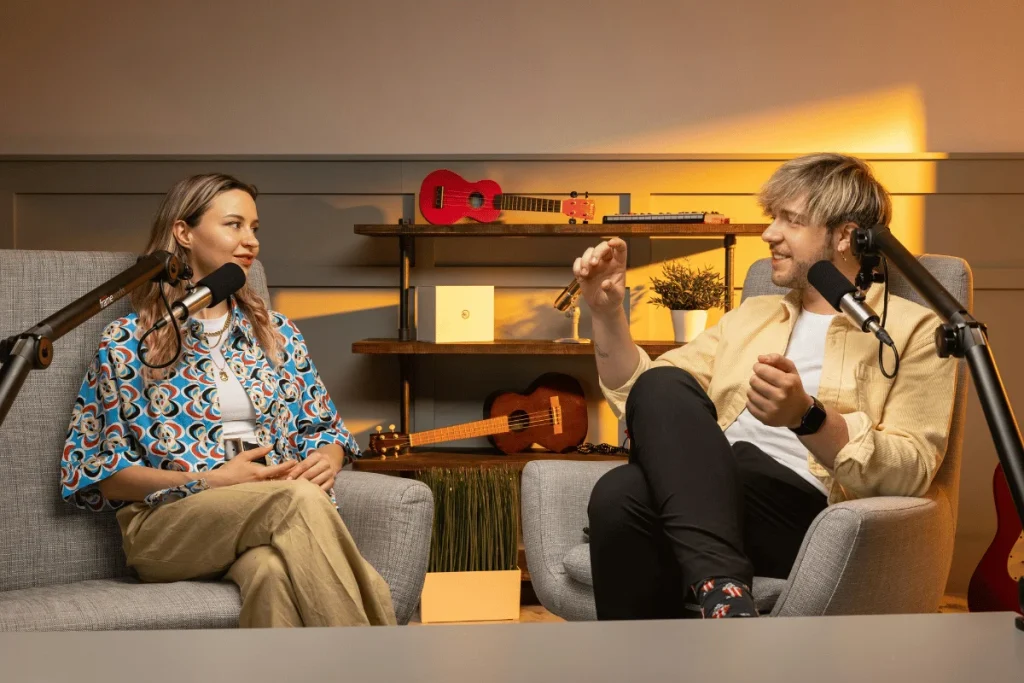
Podcast Editing Tips
Editing allows you to rectify any recording mistakes and refine your show.
Check out 10 tips to make your podcast look and sound polished:
- Shop for a Digital Audio Workstation (DAW): This software allows you to edit and mix audio tracks. Consider an editing program with multi-track editing, virtual mixing capabilities, and automatic sound effects.
- Use music that conveys emotions: Choose music or sound effects that align with your brand’s personality and tone. The music should be strategically placed to add drama, amplify your storytelling, and evoke listeners’ emotions.
- Have a catchy intro and outro: Include a unique jiggle, a slogan, or a theme song at the beginning or the end of your show.
- Adjust your dimensions: Ensure your recordings’ dimensions suit where you’ll be posting.
- Customize your recordings: For video podcasts, include background images like your brand’s logo.
- Blend audio clips seamlessly: For a smooth transition between clips, ensure there are no sudden volume changes.
- Ensure audio and video look and sound clear: Remove unwanted background noises, edit out awkward pauses, and remove apparent mistakes like sneezes.
- Polish your audio: Clean your audio recordings and fine-tune them by adjusting the volume levels, matching all your tracks, and applying equalization (EQ).
- Don’t overedit it: Carefully edit your audio, but ensure your show still sounds natural.
- Re-listen your audio: Listen to the podcast once you’re done editing to ensure the show is good to publish.
When it comes to editing, it’s crucial not to skimp on it and spend ample time fine-tuning your podcast.
However, don’t overthink or overdo it.
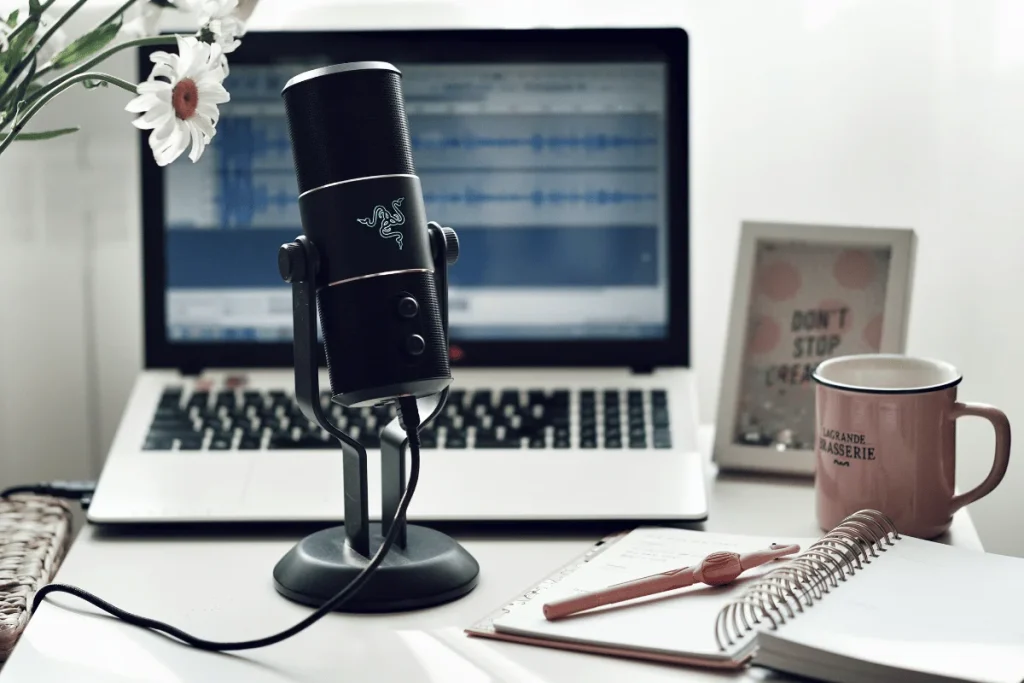
Podcast SEO Tips
Besides recording and editing, SEO is an equally crucial step to optimize your show for search engines.
Here are 10 SEO practices to boost your visibility:
- Transcribe your podcasts: Create podcast transcripts for each episode to reach a wider audience, including those with hearing impairment.
- Choose the right keywords: Perform keyword research to find high-search and low-competition keywords.
- Write an optimized description: You should write a compelling description and include a list of keywords in that, too.
- Create quality content: Quality is critical to SEO. So, provide value on each topic and make it easier for your audience to find the information they want.
- Optimize your title and show notes: Include keywords throughout your podcast’s written content, such as in the summary of each episode. Also, create your titles for each episode around a keyword.
- Record video: Consider video podcasts and publish them on platforms like YouTube, where there’s more room for SEO. You’ll also engage your audience for longer.
- Build backlinks: Although difficult, you can build backlinks to your podcast by asking guests to share your episode on their social media, reaching out to relevant sites, and asking them to link to it.
- Optimize images and URLs: You can strategically place keywords in the post URL, image ALT text, and image file names.
- Embed a media player: Allow your audience to listen to your podcast directly on your site to increase their time on your page, which is an excellent signal for ranking.
- Social proof: You can provide reviews on your website to increase credibility and attract new listeners.
The next step is implementing these podcast SEO practices and making your show more discoverable.

Podcast Marketing Tips
No matter how great your podcast is, you must ensure it reaches your target listeners.
Below are 10 strategies to promote and grow your podcast:
- Promote on social media: Update your followers on Instagram, Facebook, X, and TikTok about your episode release dates. You can also share memorable quotes from past episodes and tag your guests on your posts.
- Repurpose your episodes into short clips: Cut out your full audio and video episodes to create short, shareable clips.
- Run adverts: Invest in social media and Google ads to reach new listeners, interact with them, and remind them to tune in to your latest episode.
- Submit to every directory: Submit your podcast RSS feed to significant listening apps such as Spotify, YouTube Podcasts, and other directories like iHeartRadio and TuneIn.
- Prompt your listeners to take action: Incorporate 2 to 3 call-to-actions (CTAs) within each episode. You can ask your listeners to share, review, and subscribe to your show.
- Cross-promote your show: Partner with other podcasters to promote each other’s shows and to expand your reach.
- Create a podcast website: A site is a great central hub for your show where your listeners can find you.
- Increase your engagement: Keep your audience engaged in newsletters and by sharing new episode releases.
- Run giveaways: Offer your listeners free merchandise and access to exclusive content to help create buzz around your brand, build a community, and increase loyalty towards your podcast.
- Invite guests and star as a guest, too: You can promote your show by inviting guests or appearing as a guest.
Now, you have 10 actionable marketing strategies. You should test and analyze them to market and grow your podcast.

How to Make a Successful Podcast With Hello Audio
Want to create a private listening experience with Hello Audio?
Learn how to make a good podcast in these 5 steps:
- Start with our free 7-day trial — no credit card required. Once you register, you can ‘Create New Feed’ and choose the ‘Private Feed’ option.
- In the next step, provide details about your podcast, including a title, description, and author’s name. Also, decide on your podcast feed image.
- Then, drag and drop your preexisting media files — TikTok videos, recordings, meeting replays, and digital courses. Our platform will convert the files into private MP3 audio feeds.
- Hello Audio allows you to edit your recordings before you publish them. Then, our platform auto-delivers them to major listening directories such as Spotify and Apple Podcasts with a click.
- The last step is to add your listeners and share the RSS links with them.
Remember, Hello Audio integrates with Zapier to automatically manage listeners.
Our platform lets you segment your listeners with tags, offer subscription-based content, insert ads, and access in-depth listener analytics per episode.
Dive into our instant demo and get hands-on experience with Hello Audio.
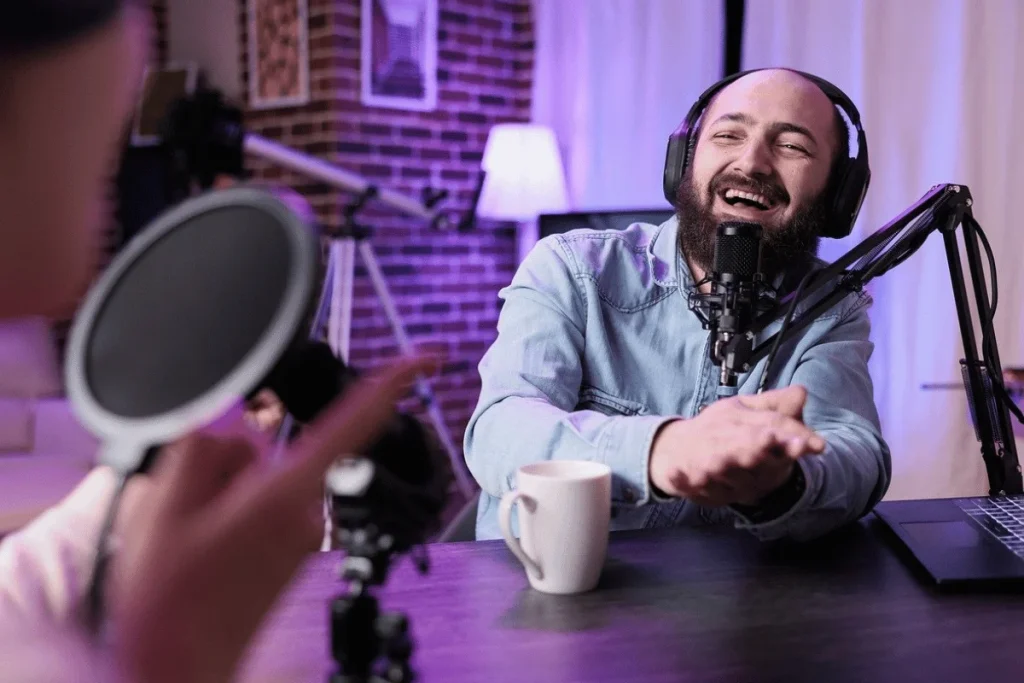
Frequently Asked Questions (FAQs)
Got questions about podcasting tips? We’ve answered them below:
What Are the Best Podcast Tips for Beginners?
While we have given you great tips for your podcast, here’s a recap of what makes a podcast good:
- Editing your podcast is essential. To make this process easier, use a Digital Audio Workstation (DAW).
- You don’t have to record your podcast from scratch. Our platform, Hello Audio, allows you to repurpose your preexisting content into private audio feeds.
- Once you’ve published your show, don’t forget to promote it using social media and other channels.
What is a Good Way to Make Your Podcast More Interesting?
Some common ways to make your podcast enjoyable are:
- Keep your podcast episodes short and avoid information overload.
- Incorporate storytelling to resonate more with your audience.
- Add tone and personality to your show.
- Incorporate a catchy hook and music.
What is the Best Content for a Podcast?
Typically, the best content for a podcast depends on the topic you and your target audience are interested in. Here are a few ideas:
- Educational: Where you round up your expertise into bite-sized pieces.
- Live events: Conduct in-depth and exciting live interviews.
- Mystery: Create content that keeps listeners guessing – you can hide clues within the episodes.
- How-to: Focus on teaching your listeners to do something.
Conclusion
If this is your first rodeo, these tips should help you record, interview guests, and edit your show. We’ve also provided tactics for marketing and boosting your podcast’s SEO.
Once you record your podcast (or want to turn existing content into a podcast), you can launch your private podcast in minutes with Hello Audio.
Our platform lets you easily convert video and audio content into private audio feeds. Then, it auto-delivers private audio feeds in podcast apps like Apple Podcasts, Overcast, and more.
Intrigued?
Launch your first podcast today without hassle and connect with your audience on the go.

